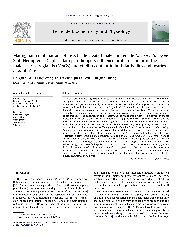摘要
The brown planthopper, Nilaparvata lugens (Stal)(Hemiptera: Delphacidae), is an insect pest in which offspring are produced by the mating of adult males with adult females. This species is a classic case in which pest resurgence is induced by insecticides. In the past, studies of resurgence mechanisms have focused on insecticide-induced stimulation of reproduction in adult females. To date, however, the role that males play in the resurgence mechanisms of N. lugens has not been investigated. The aim of the present study is to examine changes in protein levels in male accessory glands (MAGs) induced by the insecticides triazophos and deltamethrin and to determine their relationship with vitellin content in the fat bodies and ovaries of adult females in the context of mating pairs. Our results show that protein content in MAGs is significantly affected by male mating status, insecticide type, and insecticide concentration. Insecticide application induced increased protein levels in MAGs. A greater quantity of MAG products was transferred to females via mating. Thus, protein levels in MAGs significantly decreased after mating. Experimental matings indicate that vitellin content in both fat bodies and ovaries of adult females in mating pairs consisting of a treated male and an untreated female (male(t), x female(ck)) is significantly greater than that of females in pairs consisting of an untreated male and an untreated female (male(ck) x female(ck)). Under various concentrations of the two insecticides, vitellin levels are highest in mating pairs consisting of a treated male and a treated female (male(t) x female(t)), followed by mating pairs consisting of an untreated male with a treated female (male(ck) x female(t)). These findings demonstrate that (1) insecticides have an effect on males; (2) insecticide effect can be transferred to females; and (3) the reproductive effect of insecticides is strongest in mating pairs in which both the males and females are treated compared to pairs in which only one individual is treated. These findings provide valuable information about the role of males in pesticide-induced resurgence of N. lugens.
- 出版日期2010-10
- 单位扬州大学
